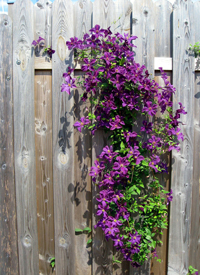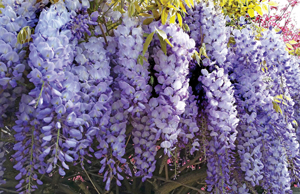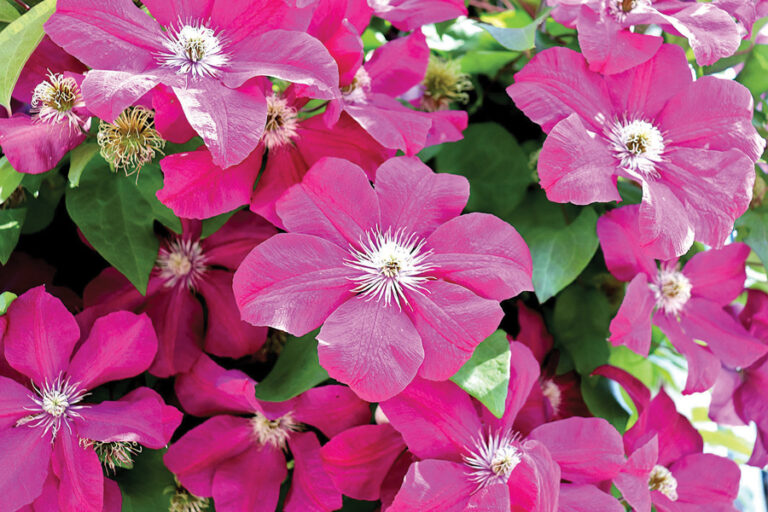Are you frustrated at the lack of planting space in your garden? Many homes, particularly modern houses, have small gardens. This might be viewed as a negative feature – or you could turn it on its head so that it becomes one of the best-loved aspects of your home. It’s all about creativity and making the most of every part of the garden.
If you can incorporate dual or multiple usage of different areas, this unlocks all sorts of possibilities. Thus, the garden shed provides a wonderful opportunity for the addition of a living green roof, and the covered wood store or decorative bin storage area creates room for a vegetable or cut-flower raised-bed planter on its roof. The dark and dingy north-facing section of an outside space can be transformed into a cosy jungle den for the children, surrounded by lush ferns and ivy, and it could even house a firepit around which everyone can gather in the evenings.
Garden steps might be adorned with pots of colourful bulbs, perennials, grasses and annuals, and trees can double up as wildlife havens with the addition of bird feeders, nest boxes and insect hotels. Then there are the fences! If you are the proud householder of a London or city home, your garden might measure just sixteen square metres in total. Your boundaries could be marked by fence panels, which often measure around 1.8m (6ft) tall by 1.8m wide. Each fence panel therefore represents an area of 3.24 square metres of plant space. Thus, your garden planting area could be extended by around twenty metres! What’s more, using plants to cover your fences tends to blur the boundaries and give the illusion of a much larger garden.
Climbing plants
Choose your climbers with care. Not only do you need to consider the requirements of the individual plants, but also their habits with regard to height and spread. Neighbours should be a consideration because a vigorous climber is capable of spreading far and wide. The majority of climbers will require support in terms of wires or trellis. Some produce tendrils that curl around their support, some are self-clinging as they grow little suckers, but others, such as climbing roses, will need to be tied to something structural.
 Which position?
Which position?
Clematis are suitable for a wide range of planting places, with many preferring a sunny aspect such as south or south-west. Bear in mind that their roots like to be planted deeply and it’s a good idea to cover the soil with mulch or pebbles to keep them cooler. Some clematis will be happier on a north-facing fence, so check before planting. You can put multiple clematis against one fence panel, but be aware of their pruning needs, which differ according to their category.
Passion flower, Passiflora, loves to sunbathe and the exotic blooms, said to represent the crucifixion of Jesus, are produced freely during summer. Not all species are hardy, so check the label before planting. If you want your passion flower to produce edible fruit, you’ll need the variety Passiflora edulis. The others are purely ornamental, although the fruits are objects of interest in themselves!
Another sun lover is star jasmine, Trachelospermum jasminoides and T. asiaticum. These love a sheltered position and will reward you with richly scented, creamy coloured flowers in summer. The evergreen foliage provides screening all year round but take care in extremely cold winters as it will benefit from some protection.
Honeysuckle is a great climber that provides wildlife habitats, scented nectar-rich flowers and berries for birds too. It prefers a partially shaded site because the leaves can be scorched by full sun. Choose east, west, or even north-facing in preference to south.
 Wisteria is generally too vigorous for a simple fence, but perhaps you could incorporate a pergola, onto which it can scramble? This climbing vine needs pruning twice per year, but it will reward you with drooping racemes of spring blooms.
Wisteria is generally too vigorous for a simple fence, but perhaps you could incorporate a pergola, onto which it can scramble? This climbing vine needs pruning twice per year, but it will reward you with drooping racemes of spring blooms.
On your shadier fences you might consider some foliage plants that are self-clinging, such as ivy and Parthenocissus. Both Boston ivy and Virginia creeper will be too vigorous for a fence panel unless you are able to keep them well-pruned, but they produce spectacular autumn colour that is second-to-none.
The climbing hydrangea petiolaris is another that uses suckers. It’s a great choice for a shady wall, but once again it is likely to grow very large once it has established, so be prepared to prune hard once it has reached the top of the fence.
By Caroline Knight


